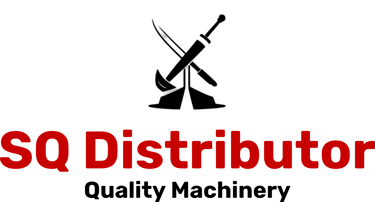Understanding the Types and Characteristics of Forklifts
Forklifts play a crucial role in modern logistics transportation, offering efficient handling, loading, unloading, and transportation of palletised goods. They are widely used in various industries such as ports, warehouses, distribution centers, and more. This article aims to provide an overview of the different types and characteristics of forklifts, shedding light on their diverse applications and benefits.
Electric Forklifts: Electric forklifts are powered by electric motors and use batteries as their energy source. They typically have a carrying capacity of 1.0-4.8 tons and offer a working channel width of 3.5-5.0 meters. These forklifts are ideal for environments with high environmental requirements due to their low noise levels and minimal pollution. It is important to have spare batteries available for multi-shift operations, along with dedicated charging stations.
Storage Forklifts: Storage forklifts are designed specifically for cargo handling within warehouses. While some are manually operated, most storage forklifts are driven by electric motors. They are known for their compact size, maneuverability, lightweight, and environmental performance. Motor-driven storage forklifts require backup batteries for multiple shifts and dedicated charging points at the workplace.
Electric Pallet Handling Forklifts: With a carrying capacity of 1.6-3.0 tons, these forklifts are used for horizontal handling and loading/unloading tasks within warehouses. They offer two operation modes: walking type and standing driving type, allowing operators to choose based on efficiency requirements.
Electric Pallet Stacking Forklifts: These forklifts, with a carrying capacity of 1.0-1.6 tons, are equipped with additional masts compared to electric pallet trucks. They are primarily used for stacking and loading/unloading goods, with a maximum lifting height of approximately 4.8 meters.
Reach Trucks: Reach trucks have a carrying capacity of 1.0-2.5 tons and feature forward or retractable masts. The retractable mast allows for a narrower working channel width of 2.7-3.2 meters, making them suitable for medium-height stacking and picking tasks in warehouses.
Electric Picking Forklifts: These forklifts are used in scenarios where specific goods need to be selected and formed into pallets, such as supermarket distribution centers. They are available in low-level picking forklifts (up to 2.5 meters) and medium-high picking forklifts (up to 10 meters) variants, with carrying capacities ranging from 1.0-2.5 tons.
Low Driving Three-Way Stacking Forklifts: Equipped with a three-way stacking head, these forklifts allow for stacking and picking of goods on both sides without the need for turning. They have a channel width of 1.5-2.0 meters and a lifting height of up to 12 meters. The cab remains at ground level and is not lifted.
High Driving Three-Way Stacking Forklifts: Similar to low driving three-way stacking forklifts, these forklifts also feature a three-way stacking head. They offer a channel width of 1.5-2.0 meters and a lifting height of up to 14.5 meters. The cab can be raised, providing better visibility and enabling picking operations.
Electric Tractors: Electric tractors utilize their traction capacity (3.0-25 tons) to pull multiple carts loaded with goods. They are commonly used for transporting large quantities of goods within workshops or between workshops, such as in the automotive manufacturing industry or airport luggage transportation.
Internal Combustion Forklifts: Internal combustion forklifts rely on engines powered by diesel, gasoline, liquefied petroleum gas (LPG), or natural gas. These forklifts have a higher load capacity, usually exceeding 5 tons. Internal combustion forklifts are suitable for outdoor use and can operate continuously for extended periods, making them suitable for demanding environments with no specific exhaust emission or noise requirements.
Conclusion: Understanding the types and characteristics of forklifts is essential for selecting the right equipment for specific handling tasks. Electric forklifts provide clean and efficient operation, while storage forklifts offer maneuverability within warehouses. Internal combustion forklifts excel in heavy-duty outdoor applications. By utilizing the appropriate forklift for each task, businesses can enhance productivity, reduce labor intensity, and optimize material handling operations.
